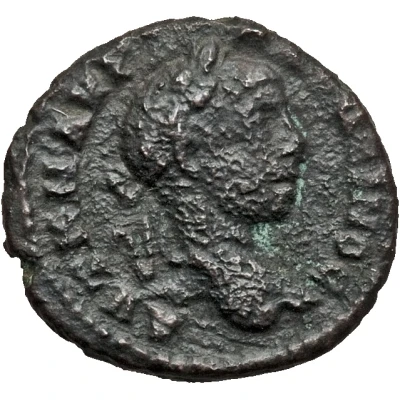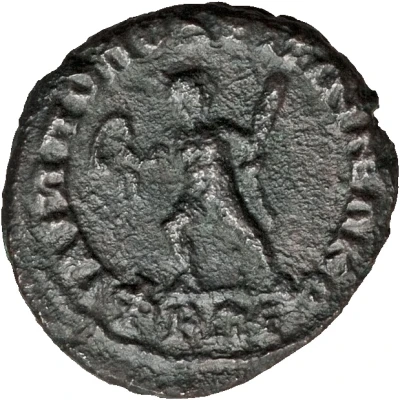


© Heritage Auctions
Æ18 - Elagabalus ΦIΛIΠΠOΠOΛEITΩN NEΩKOΡΩN
| Bronze | 3.37 g | 18 mm |
| Issuer | Philippopolis (Thracia) |
|---|---|
| Emperor | Elagabalus (Sextus Varius Avitus Basianus) (218-222) |
| Type | Standard circulation coin |
| Years | 218-222 |
| Composition | Bronze |
| Weight | 3.37 g |
| Diameter | 18 mm |
| Shape | Round (irregular) |
| Technique | Hammered |
| Demonetized | Yes |
| Updated | 2024-10-06 |
| Numista | N#76455 |
|---|---|
| Rarity index | 97% |
Reverse
Athlete advancing left, head right, holding wreath and palm
Script: Greek
Lettering: ΦIΛIΠΠOΠOΛEITΩN NEΩKOΡΩN
Translation:
Philippopoleiton Neokoron:
"of Philippopolis, Temple Keeper".
Interesting fact
The coin , the Æ18 - Elagabalus (ΦIΛIΠΠOΠOΛEITΩN NEΩKOΡΩN) (218-222) from Philippopolis (Thracia) made of Bronze weighing 3.37 g, is a rare example of a coin that was issued during the reign of Elagabalus, who was the Roman Emperor from 218 to 222 AD. Elagabalus was known for his eccentric and controversial behavior, and his coins are highly sought after by collectors today. This particular coin is interesting because it features an image of the emperor on one side and a depiction of the goddess Tyche on the other, which was a common motif on coins issued during his reign. Additionally, the coin's weight and composition, made of bronze and weighing 3.37 grams, is consistent with other coins issued during this time period. Overall, this coin is a valuable piece of history that provides insight into the currency and artistry of the Roman Empire during the 3rd century AD.